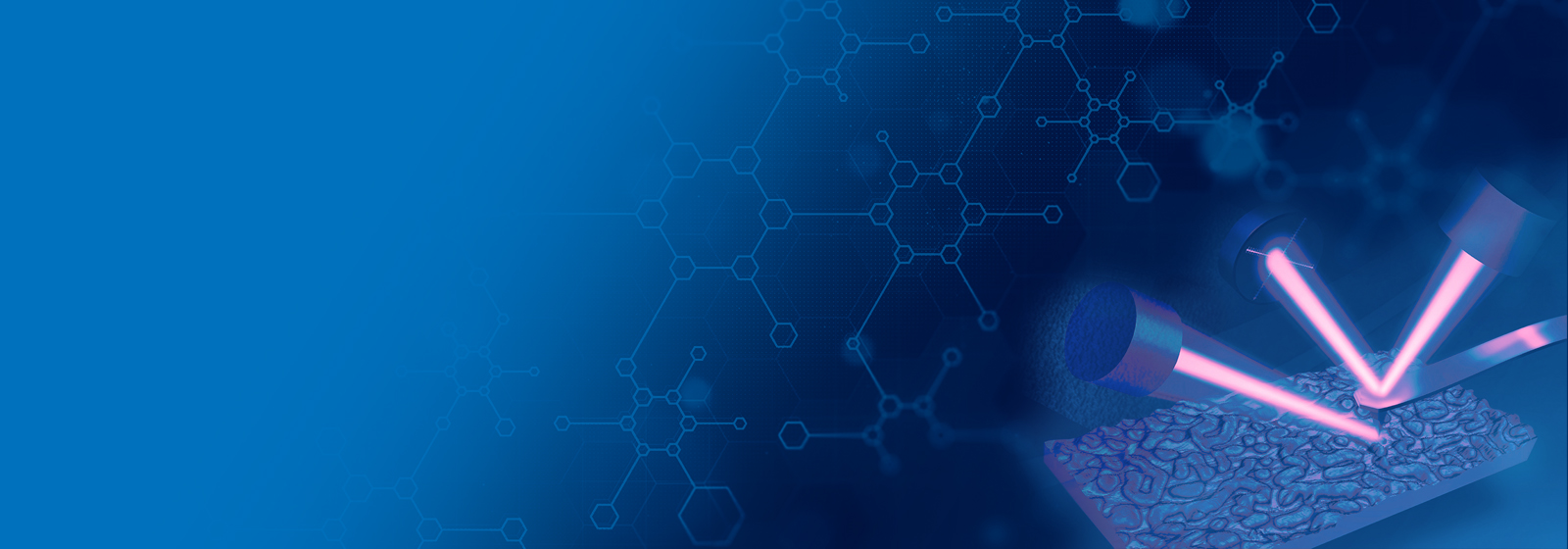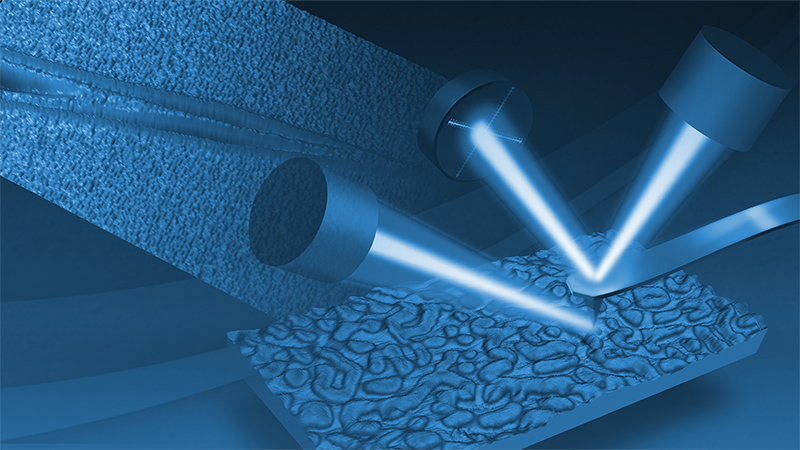

Photothermal AFM-IR: Enhanced Analysis Capabilities for Life Science Research
Delivering enhanced analysis capabilities for life science Research with photothermal AFM-IR.
Nanoscale infrared microscopy enables label-free, chemical imaging, and spectroscopy at the nanometer scale by combining atomic force microscopy (AFM) with infrared radiation. Photothermal AFM-IR allows the simultaneous analysis of the chemical, mechanical, and structural properties of materials and heterogeneous biological matter, such as single-molecules and individual monolayers.
This on-demand webinar covers:
- Overview of the working principle of Photothermal AFM-IR
- Latest technical advances
- Outline of modes suitable for biological samples, their advantages and limitations
- Innovative applications in life science research
Dr. Ruggeri speaks about the photothermal AFM-IR technique and using it to determine the molecular fingerprint of biomolecules, the secondary structure of protein and their assemblies, and unravel protein phase transitions in healthy and diseased states.
Abstract
Photothermal AFM-IR and Applications in Life Science
The introduction of photothermal infrared nanospectroscopy (AFM-IR) has revolutionized the field of nano-chemical analysis in a wide range of fields that include biological, material, and polymers in soft matter sciences. In this talk, he will give an overview of his work focusing on the latest developments and applications of AFM-IR in combination with advanced spectroscopic analysis and chemometrics that are a real breakthrough for the analysis of heterogeneous biomolecular systems and soft matter down to the single molecule level.
To illustrate their path towards single-molecule AFM-IR, he will first show the achievement of single protein molecule detection of infrared absorption spectra and maps by introducing off-resonance, low power, and short pulse ORS-nanoIR. This approach enables the accurate single-molecule chemical identification and determination of the secondary structure of protein and their assemblies. He will then showcase the application of this unprecedented single molecule sensitivity to unravel protein phase transitions in health and disease, focusing on: i) characterizing the properties of amyloids related to the onset of neurodegenerative disorders; ii) unravelling physiological liquid-liquid phase separation and condensates formation versus pathological liquid-to-solid transition; iii) identify the molecular fingerprint of biomolecules, such as protein, with small molecule drug approaches against disease. He will go into the goal of his group of expanding the capabilities of analytical nanoscience to shed light on the structure-activity relationship of biomolecules and functional materials and drug design.
Find out more about the technology featured in this webinar or our other solutions for Photothermal AFM-IR:
Featured Products and Technology
Speakers
Dr. Francesco Simone Ruggeri, Assoc. Prof. of Nanoscale Microscopy and Spectroscopy, Wageningen University and Research (WUR), Netherlands
Dr. Francesco Simone Ruggeri obtained a PhD in Biophysics in 2015 at the École Polytechnique Fédérale de Lausanne, Switzerland. Following his doctorate, he completed an independent Jr. Research Fellowship at the Dpt. of Chemistry at University of Cambridge and at Darwin College (UK) where he also received a Master of Arts for his management role of the college. At WUR, he is also Chairman of the Nanoscopy Facilities for Analytical ChemisTry (NanoFACT).
Dr. Ruggeri's research lies at the intersection of physics, chemistry, and biology, with a particular emphasis on developing and applying transformative nano-analytical imaging and spectroscopy that allows multimodal mechanical and chemical characterization. His work has significantly advanced the field of AFM-IR, enabling chemical fingerprinting and structural analysis down to the single-molecule level and in liquid environments.
Dr. Ruggeri’s group applies these technologies to study biomolecular systems, focusing on the protein phase transitions underlying the onset and progression of neurodegenerative diseases, such as Alzheimer's and Parkinson's. Their work also extends this approach to the study of functional biomaterials, perovskites, polymers, and micro-/nanoplastics. Dr. Ruggeri has authored over 80 peer-reviewed scientific articles, published in journals such as Nature, PNAS, and Science. He has an h-index of 45 and has been cited over 6,700 times.
Dr. Qichi Hu, Senior Applications Scientist
Qichi is currently a Senior Staff Applications Scientist at Bruker Nano. He received a bachelor’s degree from Peking University and Ph.D. from University of British Columbia. He then did postdocs in U.S. university and national labs. Qichi has been working on nanoIR development and applications for over a decade, at Anasys and now at Bruker.
Cassandra Phillips, Ph.D.
Application Scientist, BrukerCassandra did her Ph.D. at the University of Toronto exploring the photophysics of boron nitride nanotubes using scattering scanning nearfield optical microscopy (s-SNOM) and computational models. She has been working at Bruker Nano Surfaces and Metrology since September 2019 as an Applications Scientist focusing on nanoscale IR spectro-microscopy and other correlated imaging techniques realized with atomic force microscopy.
